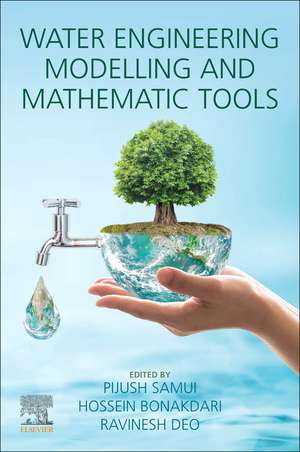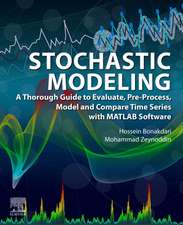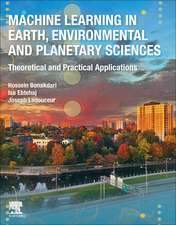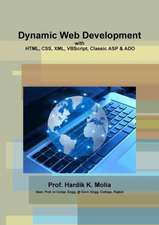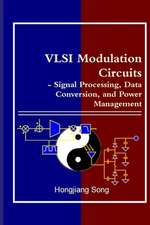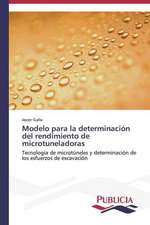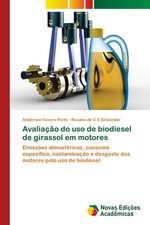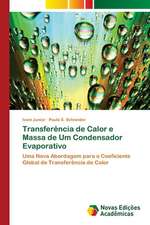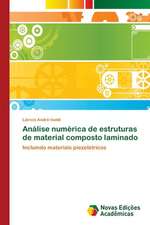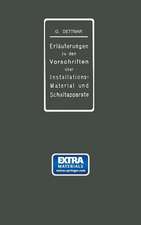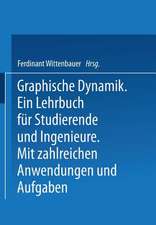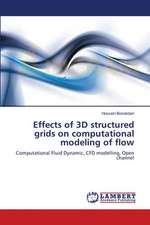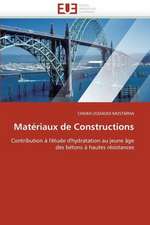Water Engineering Modeling and Mathematic Tools
Editat de Pijush Samui, Hossein Bonakdari, Ravinesh Deoen Limba Engleză Paperback – 10 feb 2021
This book provides key ideas on recently developed machine learning methods and AI modelling. It will serve as a common platform for practitioners who need to become familiar with the latest developments of computational techniques in water engineering.
- Includes firsthand experience about artificial intelligence models, utilizing case studies
- Describes biological, physical and chemical techniques for the treatment of surface water, groundwater, sea water and rain/snow
- Presents the application of new instruments in water engineering
Preț: 676.20 lei
Preț vechi: 918.48 lei
-26% Nou
Puncte Express: 1014
Preț estimativ în valută:
129.38€ • 135.10$ • 106.85£
129.38€ • 135.10$ • 106.85£
Carte tipărită la comandă
Livrare economică 08-22 aprilie
Preluare comenzi: 021 569.72.76
Specificații
ISBN-13: 9780128206447
ISBN-10: 0128206446
Pagini: 590
Ilustrații: 250 illustrations (50 in full color)
Dimensiuni: 152 x 229 x 32 mm
Greutate: 0.78 kg
Editura: ELSEVIER SCIENCE
ISBN-10: 0128206446
Pagini: 590
Ilustrații: 250 illustrations (50 in full color)
Dimensiuni: 152 x 229 x 32 mm
Greutate: 0.78 kg
Editura: ELSEVIER SCIENCE
Public țintă
Water Engineers, water and civil engineering practitioners, hydrologists and policy-makersCuprins
1. Numerical insight into the sonolytic ozonation applied for water treatment
2. Sea water desalination
3. New Formulation for Predicting Soil Moisture Content using only Soil Temperature as Predictor: Multivariate Adaptive Regression Splines Vs Random Forest, MLPNN, M5Tree and MLR
4. Numerical simulation of acoustic cavitation and its chemical effect in seawater: Toward understanding the multiple role of salinity in the sonochemical degradation of organic pollutants
5. Computer simulation of N2O/argon gas mixture effect on the acoustic generation of hydroxyl radicals in water: Toward understanding the mechanism of N2O inhibited/improved-sonochemical processes
6. Recent remediation technologies for contaminated water
7. Water chemistry in the biological studies by using nuclear analytical techniques
8. Protection from harmful effects of water – Examples from Serbia
9. Gravity-driven Membrane Filtration for Water and Wastewater Treatment
10. Modelling Hydraulics and Water Quality in Distribution Networks: Review of Existing Mathematical Techniques and Software
11. Remediation of oil contaminated water for reuse using polymeric nanocomposites
12. Hydrological contaminant transport
13. Desalination technologies and potential mathematical modelling for sustainable water-energy nexus
14. Emerging Trends of Water Quality Monitoring and Applications of Multivariate Tools
15. Experimental study on bed deformations due to flows over macro-roughness conditions
16. An Introduction to Hydraulics and Hydraulic Structures
17. Mixing of Inclined Dense Jets: A Numerical Modelling
18. Real-time Flood Forecasting with Weather Radar and Distributed Hydrological Model
19. Flood susceptibility mapping in ungauged watersheds using a statistical model
20. Groundwater potential mapping using hybridization of simulated annealing and random forest
21. Synergy of Combining Megahertz Ultrasound Frequency and Heat Activated Persulfate for Wastewater Decontamination: Micro-modeling of Acoustic Cavitation and its Role in the Sono-hybrid Process
22. On the sonochemical production of nitrite and nitrate in water: Computational study
23. Numerical insight into the liquid compressibility effect on the sonochemical activity of acoustic bubbles
24. Extremely Randomized Tree: A New Machines Learning Method for predicting Coagulant Dosage in Drinking Water Treatment Plant
25. Pareto Design of Multi-Objective Evolutionary Neuro-Fuzzy System for Predicting Scour Depth around Bridge Piers
26. River Flow Forecasting Using Stochastic and Neuro-Fuzzy Embedded Technique: A Comprehensive Pre-Processing Based Assessment
27. Desalination technologies and potential mathematical modelling for sustainable water-energy nexus
2. Sea water desalination
3. New Formulation for Predicting Soil Moisture Content using only Soil Temperature as Predictor: Multivariate Adaptive Regression Splines Vs Random Forest, MLPNN, M5Tree and MLR
4. Numerical simulation of acoustic cavitation and its chemical effect in seawater: Toward understanding the multiple role of salinity in the sonochemical degradation of organic pollutants
5. Computer simulation of N2O/argon gas mixture effect on the acoustic generation of hydroxyl radicals in water: Toward understanding the mechanism of N2O inhibited/improved-sonochemical processes
6. Recent remediation technologies for contaminated water
7. Water chemistry in the biological studies by using nuclear analytical techniques
8. Protection from harmful effects of water – Examples from Serbia
9. Gravity-driven Membrane Filtration for Water and Wastewater Treatment
10. Modelling Hydraulics and Water Quality in Distribution Networks: Review of Existing Mathematical Techniques and Software
11. Remediation of oil contaminated water for reuse using polymeric nanocomposites
12. Hydrological contaminant transport
13. Desalination technologies and potential mathematical modelling for sustainable water-energy nexus
14. Emerging Trends of Water Quality Monitoring and Applications of Multivariate Tools
15. Experimental study on bed deformations due to flows over macro-roughness conditions
16. An Introduction to Hydraulics and Hydraulic Structures
17. Mixing of Inclined Dense Jets: A Numerical Modelling
18. Real-time Flood Forecasting with Weather Radar and Distributed Hydrological Model
19. Flood susceptibility mapping in ungauged watersheds using a statistical model
20. Groundwater potential mapping using hybridization of simulated annealing and random forest
21. Synergy of Combining Megahertz Ultrasound Frequency and Heat Activated Persulfate for Wastewater Decontamination: Micro-modeling of Acoustic Cavitation and its Role in the Sono-hybrid Process
22. On the sonochemical production of nitrite and nitrate in water: Computational study
23. Numerical insight into the liquid compressibility effect on the sonochemical activity of acoustic bubbles
24. Extremely Randomized Tree: A New Machines Learning Method for predicting Coagulant Dosage in Drinking Water Treatment Plant
25. Pareto Design of Multi-Objective Evolutionary Neuro-Fuzzy System for Predicting Scour Depth around Bridge Piers
26. River Flow Forecasting Using Stochastic and Neuro-Fuzzy Embedded Technique: A Comprehensive Pre-Processing Based Assessment
27. Desalination technologies and potential mathematical modelling for sustainable water-energy nexus
